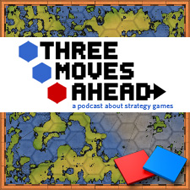It has seemed liked every year for the last three has been a transitional year for some reason, and the blog always suffers a little. This year, with a change in city and profession, was more transitional than anticipated, so I played fewer games freshly, and was constrained in what I could really say about a lot of them.
But some writing still got done in spite of that. Here are my favorite pieces from the blog in the last year.
1) The National Character series saw the bulk of its entries completed in 2011 and proved to be a bigger traffic success than I anticipated. Not that I write for the world (I write for myself and for you loyal regular readers), but it was satisfying to see this kind of criticism appreciated by the wider gaming community. I like the Aztec, English, Russian and Zulu entries best.
2)In September, I wrote a post on Collaborative Criticism with even a smaller audience than usual in mind. I want to see more of this kind of writing and regret that the collaborative column I was planning in 2010 never really got off the ground. But that was a post written straight from the heart, with a little bit of regret and a bit of a call to people who can and should do this.
3) In July, I outlined my theories on the place of puzzles in strategy games.
4)That month also saw me unleash hell on the idea of strategy games not being “contemporary”. Well, my own modest Canadian diplomatic version of hell.
5) I wrote about my efforts learning a new genre – racing games. And, six months later, was rewarded with a used driving wheel for my PC for Christmas. <3 6) I took some shots at Republic of Rome‘s layout and promised Tom Chick a post I haven’t written yet.
7) Turning points in strategy games are one of my big things when I talk about player authored narrative in this genre.
And, even better for me this year, Bruce Geryk wrote a few things for the blog. Besides his Holiday Guest Blog, Bruce wrote about PQ-17, which we will start playing soon. Dr. Geryk is kind of funny because he always sends me 2000 words and then asks if I have any place for them on the blog. Bruce has author access, and as far as I’m concerned, he can write whatever he wants about games whenever he wants to on FoS – at least until he finds a home worthy of him.
I’ll do the annual traffic report tomorrow, but for now I’d like to thank all of you for reading and emailing and commenting. (I promise that FlashofSteelTV is going to happen – before February.) Your questions and support have meant a great deal to me, as has your continued support of the podcast under Rob Zacny’s able control. And you disagree with me and my guest bloggers in a civil manner. If we’re a niche, we’re a well behaved one.
A special thanks to those friends who made sure I did not completely crumble under the pressure this year – new job, new city, new start and overwhelmed by a lot of it. You all had your own stuff going on, some of it very serious. But we circled the wagons and made it out alive as a group. And the blog still lives because some of you (and one persistently) kept pushing me to write something because you knew it mattered.
Happy New Year.


